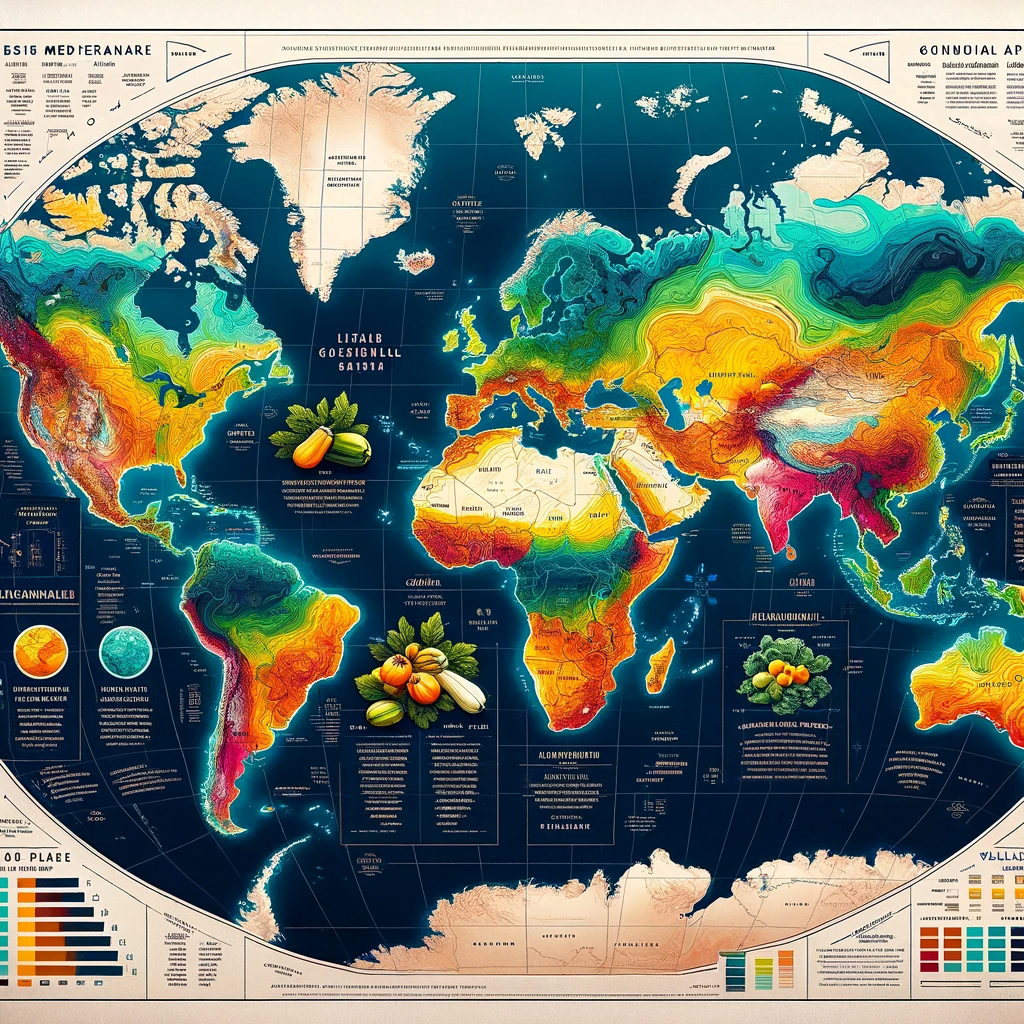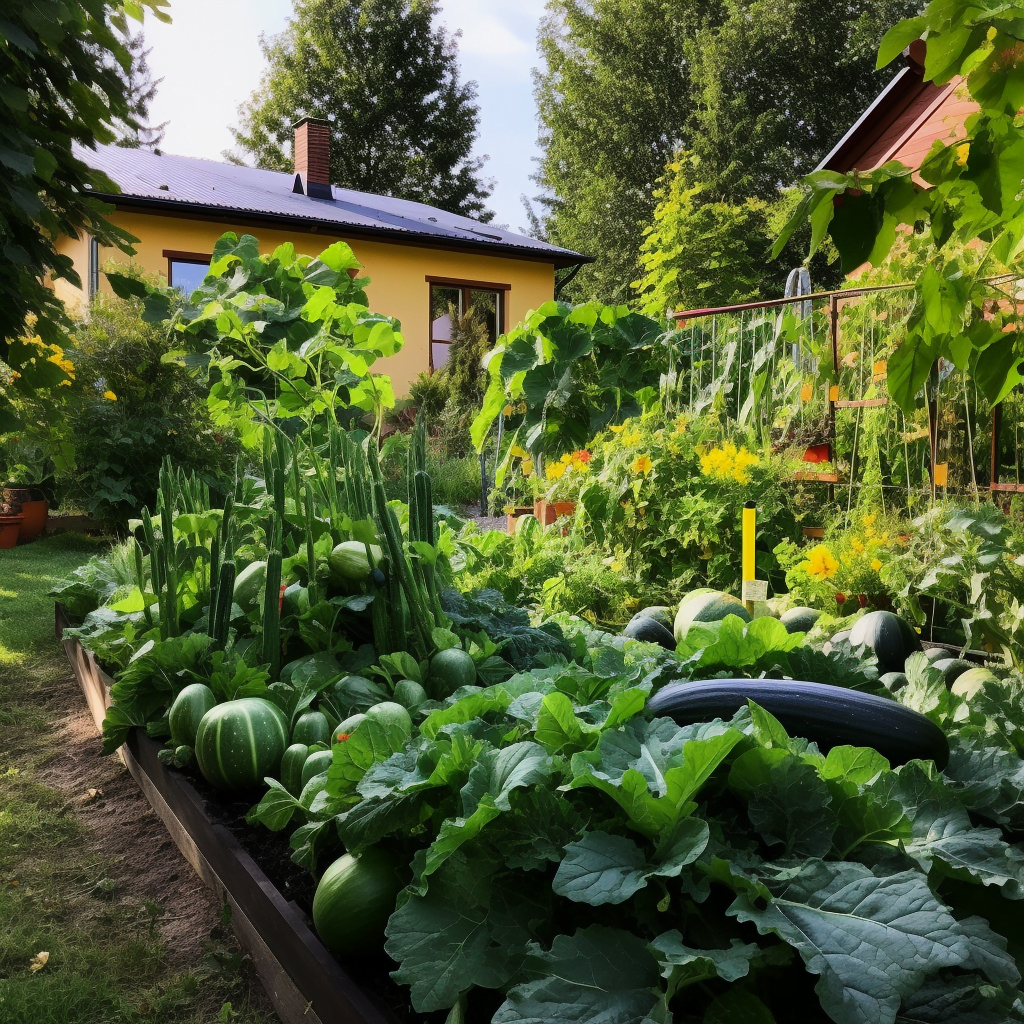Zucchini is a popular summer squash that can be a delicious addition to many dishes. However, getting a productive zucchini crop depends heavily on having the right geographic location and climate conditions. When it comes to the ideal environment for growing zucchini, some regions around the world really shine above others. lets finned out together Where Is The Best Place Geographically To Grow Zucchini?
Where Zucchini Grows Best
Zucchini thrives in locations that meet its key growing requirements:
- Warm regions with long growing seasons. Zucchini needs warm soil and air temperatures above 65°F once planted. Areas with long summers that stretch from spring to fall are best suited for zucchini to maximize growth.
- Regions with fertile, well-draining soil. Zucchini plants need nutrient-rich soil that is well-drained and allows oxygen to reach the roots. Heavy clay or sandy soils won’t grow zucchini as well and can lead to root rot. Loamy, silt, or sandy loam soils are ideal.
- Areas that receive full sun. Zucchini requires at least 6-8 hours of direct sunlight per day for the best growth and fruit production. Morning sun that warms the plants early is especially important.
- Locations with access to sufficient water. Zucchini plants need about 1-2 inches of water per week from rain or irrigation. Reliable access to water is a must throughout the entire growing season.
- Moderate humidity levels. Excessively arid climates or extremely humid tropical zones are not optimal for zucchini growth. The ideal humidity range is 40-70%.
- Protection from heavy winds. Strong winds can damage zucchini plants and reduce pollination. Some wind protection creates a better growing environment.
Ideal Climate Conditions
When evaluating geographic regions for zucchini growing, keep an eye out for areas with these ideal climate factors:
- Warm summer temperatures. Daytime highs between 70-90°F are perfect for zucchini during its growing season. Lower or higher extremes can impair growth and flowering.
- Nighttime lows above 50°F. Cool nights below 50°F can stunt plants and reduce fruit set. Consistently warm overnight temps are best.
- Avoid extreme heat. Temperatures consistently above 95°F can cause flowers and fruit to abort. Select heat tolerant varieties in hot climates.
- Avoid frequent frost/freezes. Although zucchini can tolerate occasional light frosts, extended cold snaps below 50°F or hard freezes will damage plants.
- Low temperature fluctuations. Sudden cold snaps or heat waves create plant stress. Steady warm temps are ideal.
- Moderate humidity around 60-70%. This provides the right balance of moisture. Lower humidity can dry plants out, higher humidity increases disease risk.
- Low levels of precipitation during flowering/fruiting. Wet weather during flowering can prevent pollination. Heavy rains on ripening fruit often cause rot and disease.
- Dry spells for root development. Periods without rain allow roots to establish deeply before fruiting begins.
- Protection from heavy winds. Gentle breeze is fine to circulate air, but excessive wind damages plants and limits pollination, reducing yields.

The Best Geographic Regions for Growing Zucchini
Taking climate and growing conditions into account, these regions consistently produce abundant zucchini crops:
Mediterranean Regions
The warm, sunny Mediterranean climate offers near-perfect conditions for zucchini plants to thrive. Regions like Spain, Italy, Greece, and the Mediterranean coasts of France, Turkey, Israel, and Morocco allow a long growing season and ideal temperatures typically ranging from 70-90°F during summer. Well-draining, fertile soils like terra rossa clay loams abound in river valleys and deltas. Reliable irrigation water is available near coastal areas due to the sea. The moderately humid climate around the Mediterranean provides a good balance of moisture without excessive disease pressure.
Protected areas out of strong winds, such as coastal zones or inland valleys surrounded by hills, create excellent microclimates for zucchini cultivation in the region. The combination of climate factors makes the countries circling the Mediterranean prime zucchini growing territory.
Southeastern U.S.
Warm southern states such as California, Florida, Georgia, Mississippi, Louisiana, and parts of Texas provide plentiful sun, long summers, and moderate humidity levels that allow zucchini to thrive. Daytime highs typically peak from 85-95°F with nighttime lows rarely dipping below 60°F, and humidity averaging 50-70% through summer.
Fertile soils like alluvial deposits or sandy loams retain moisture while still draining well. Coastal areas can utilize drip irrigation to supplement summer rainfall of 2-4 inches per month. Inland areas often see higher precipitation, reducing irrigation needs. The hot southern climate produces heat-loving zucchini varieties prolifically.
Australia and New Zealand
Coastal and northern areas of Australia and throughout New Zealand mimic Mediterranean conditions with mild humidity levels around 60% and moderately wet winters. Regions like Adelaide, Perth, Brisbane, Northland and Auckland offer long, warm growing seasons with moderate precipitation and well-draining alluvial and volcanic soils. This supports heavy zucchini harvests.
Summers in Australia average 75-90°F along the coasts to the north where zucchini thrives. New Zealand remains a bit cooler in summer with highs from 65-75°F but still suitable, especially in northern regions. Both countries avoid excessive heat but maintain the sunny, balmy temperatures zucchini prefers.
Western Africa
The tropical regions of Nigeria, Ghana, Ivory Coast, Senegal, Gambia, Burkina Faso, Benin, and surrounding countries allow year-round zucchini growing. Despite sitting near the equator, coastal areas avoid excessive heat while maintaining balmy temperatures from 75-90°F and moderate humidity around 60-70% through the year – ideal tropical conditions for zucchini.
Rich alluvial and volcanic soils retain nutrients and moisture to support growth. Average precipitation around 60 inches per year provides ample water. Abundant sun and limited temperature swings keep plants actively growing. The tropical environment supports two zucchini harvests per year in many parts of western Africa.
South America
Parts of Brazil, Peru, Ecuador, Colombia, and other countries along the equator mimic the hot, humid climates of Florida and the Gulf Coast. These zones offer sultry conditions perfect for growing heat-loving zucchini varieties to huge sizes quickly. Lush soils like Mollisols combined with 70+ inches of annual rainfall reduce irrigation requirements for monster yields.
Coastal tropical regions in South America allow zucchini plants to thrive year-round in temperatures from 75-90°F. Inland mountainous areas can show more variation but still support productive zucchini crops in the fertile valleys and plateaus during seasonal summer rainy periods from November to April.
China
Surprisingly, the warm, wet climate in southern China also provides ideal zucchini growing conditions. Provinces like Guangdong and Fujian offer long spring to fall growing seasons with hot summers and moderate humidity around 65%. Frequent rain and tropical storms provide ample moisture to the rich clay loam soils along rivers like the Pearl.
While northern China can get harsh winters, protective plastic tunnels allow zucchini harvests to begin as early as February in the fertile river plains around Beijing. Most of the country enjoys a suitable climate for zucchini somewhere. China produces more zucchini annually than any other nation thanks to its ideal climate in many regions.
Key Factors to Consider in Your Local Region
While the climates above offer prime real estate for zucchini growing, you can optimize your gardening success anywhere by considering these local conditions:
- Length of growing season – Choose early ripening varieties in cooler areas with shorter summers. Use season extending methods like low tunnels in marginal zones.
- Average summer temperatures – Select heat-loving varieties if summers are hotter. Plant in partial shade if summer heat exceeds 90°F frequently.
- Nighttime lows – Watch for cooler nighttime temperatures below 60°F that can slow growth. Use cloches to boost night warmth in cooler areas.
- Humidity and precipitation patterns – Use drip irrigation in drier zones. Improve drainage in wetter areas. Promote airflow to lower disease risk in very humid climates.
- Sunlight levels based on latitude – Supplement sun with grow lights in far northern/southern zones. Provide afternoon shade in intense lower latitudes.
- Frost dates and freezes – Plant after the last expected frost. Use cold frames or cloches to protect plants from cold spells.
- Wind protection – Use windbreaks, trellises, or sheltered microclimates to limit wind damage in exposed areas.
By optimizing these local conditions, you can achieve a productive zucchini crop almost anywhere with careful variety selection, season extension, and attentive garden care. Don’t let your region limit you!
Optimizing Your Zucchini Garden Setup
No matter where you live, a productive zucchini harvest relies on smart gardening practices:
- Choosing the right varieties – Select cultivars suited to your growing season length, temperature range, disease resistance, and other climate factors.
- Using season extending techniques – Extend your growing season by 4-6 weeks with cold frames, low tunnels, greenhouses, cloches, or row covers.
- Starting seeds or transplants properly – Sow seeds 1 inch deep in pots or soil 8-12 weeks before your last expected frost. Harden off transplants before planting out.
- Timing plantings wisely – Plant summer squash 2-4 weeks after average last frost once soil warms to at least 65°F. Make successive plantings every 1-2 weeks for a longer harvest.
- Preparing the soil thoroughly – Amend soil with 2-4 inches of compost and organic matter to provide nutrients. Create raised beds to improve drainage if needed.
- Providing proper spacing – Give each zucchini plant 1-3 feet of space in all directions to allow good air circulation and reduce disease risks.
- Watering effectively – Consistently supply 1-2 inches of water per week. Target the roots and avoid wetting leaves. Group plants to maximize irrigation efficiency.
- Using proper fertilization – Before planting, work compost and a balanced organic fertilizer into soil. Side-dress growing plants monthly with a nitrogen-rich organic fertilizer.
- Controlling pests and diseases – Use preventive measures like crop rotation, sanitation, and insect barriers. Apply organic sprays or beneficial insects if pests appear.
- Supporting and training vines – Trellis, cage, or stake plants to save space. Pruneexcess growth to focus energy on fruit production.
- Harvesting diligently – Pick zucchini when 6-8 inches long for best flavor and texture. Check plants daily and harvest frequently to encourage more production.
- Extending the harvest – Stagger plantings over a month or more to supply continuous harvests. Protect late crops from frost with cloches or tunnels.

Tips for Growing Zucchini in Challenging Climates
Don’t despair if your area lacks the ideal zucchini growing climate. With extra care, you can still succeed:
- Cool climates – Start transplants indoors up to 8 weeks early. Use cloches, cold frames, or greenhouses to extend the season. Choose fast-maturing, cold tolerant varieties.
- Hot climates – Plant heat-loving varieties that can tolerate temperatures above 90°F. Give plants afternoon shade. Mulch soil to retain moisture and cool roots. Mist plants during heat waves.
- Dry climates – Amend soil with compost to increase moisture retention. Use drip irrigation right at the roots. Mulch beds to conserve water. Avoid sprinklers that increase humidity and disease.
- Wet climates – Create raised beds to improve drainage. Space plants widely to encourage airflow. Stake plants to keep fruit off wet ground. Remove disease-prone leaves promptly.
- Low light areas – Select part to full shade tolerant varieties. Supplement sun with grow lights if needed. Position beds for maximum sunlight capture.
- Windy areas – Construct windbreaks using fences, hedges, netting etc. Stake plants for added anchoring and install low tunnels to protect from wind damage.
Conclusion
When it comes to the geography of zucchini gardening, Mediterranean climates, warm southern U.S. states, coastal Australia and New Zealand, western Africa, parts of South America, and southern China offer prime conditions. The keys are long summer growing seasons, fertile soil, abundant sun, warm temperatures, and moderate humidity with low precipitation during flowering and fruiting.
However, with careful variety selection and attentive care tailored to local conditions, a productive zucchini crop can thrive in suitable gardening zones across the world. Don’t let less-than-ideal climate limit your zucchini aspirations! With season extension techniques, soil improvements, proper irrigation, and other optimizations, you can harvest delicious zucchini just about anywhere.



